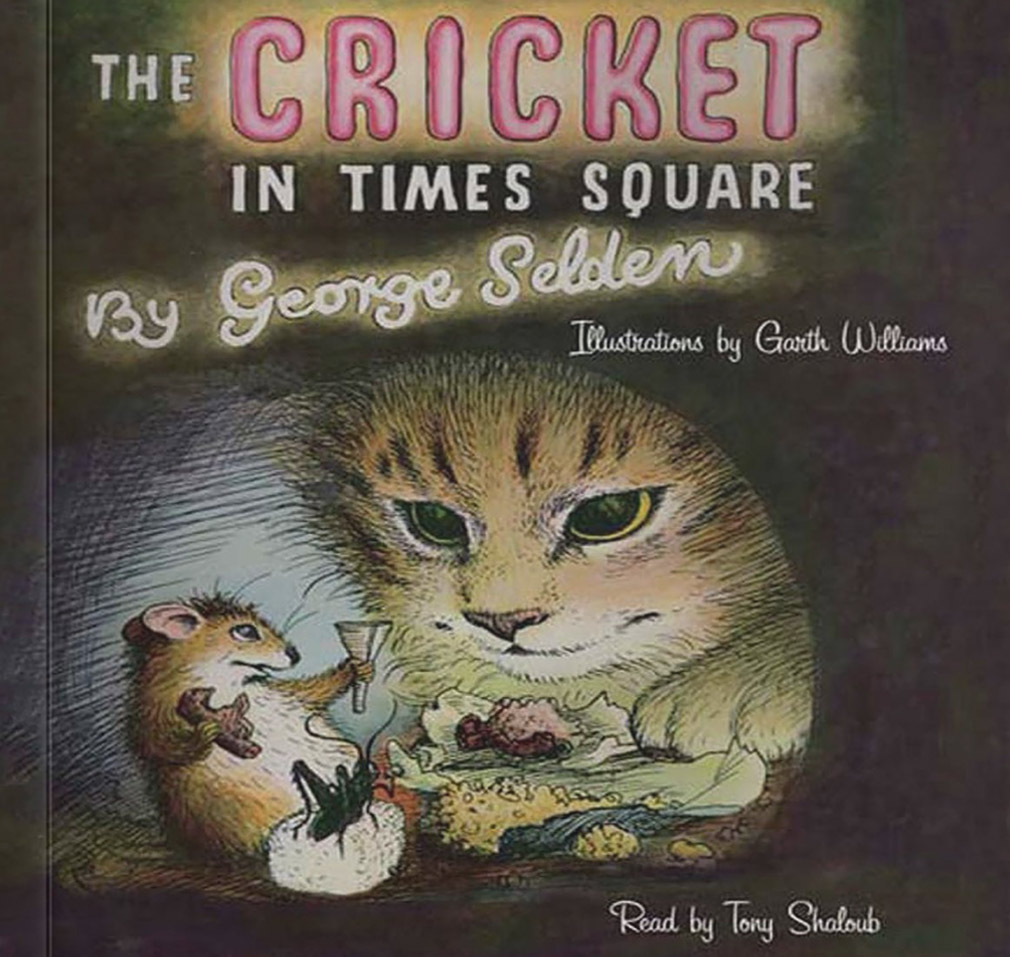hester Cricket follows his nose to liverwurst in a picnic basket and finds himself far from the familiar fields of Connecticut. Frightened, he huddles in a newsstand in the Times Square subway station of New York City. Thankfully, Mario Bellini, son of a newsstand owner, rescues Chester and begs his parents’ permission to keep the cricket. During his stay with the Bellini family, Chester makes friends with Harry Cat and Tucker Mouse. As the story unfolds, Chester’s profound musical talent, a gift that will eventually save the newsstand, is discovered.
The Cricket in Times Square, penned by George Selden (1960; reprinted Square Fish, 2008), was a 1961 Newbery Honor book. Written in the third-person point of view, the piece is a fascinating work of imagination where readers come face-to-face with the life truths of friendship, loyalty, honesty, and the meaning of home. Illustrator Garth Williams—known for the art that accompanies the plots of Stuart Little, Charlotte’s Web, and Laura Ingalls Wilder’s Little House books—helps George Selden tell the story with whimsical, detailed illustrations. This classic work of children’s literature could be an independent read for a middle school learner or a read aloud for the entire family.
Male crickets rub their wings together. This is called a pulse. The cricket’s pulse rate is impacted by temperature and species. Crickets pulse faster in warmer temperatures. In the story, Mario says that one can determine the outside temperature by the number of chirps a cricket makes. Do research to determine whether Mario’s comment is true or false.
George Sheldon’s use of figurative and descriptive language helps readers imagine the physical features and character traits of Chester Cricket (the protagonist), Tucker Mouse, Harry Cat, Mario Bellini, Mr. Smedley, and Sai Fong. Make three columns on a paper or digital document, or put three slides in a PowerPoint. Choose three characters from the list above and label the columns, one name per column or one name per slide. While reading, list five traits for each character. Cite the chapter, paragraph, and page where the trait was found.
Mario goes to Chinatown to buy a cricket box for Chester. In Chapter 6, Sai Fong tells legends about crickets in China, and in Chapter 9, Chester eats Chinese food. Learn more about Chinese culture. Prepare a Chinese meal or order Chinese take-out to try different dishes.
Male cricket wings have two surfaces. The top of the wing is called the scraper, and the rough underside is called the file. To make his music, the cricket rubs the scraper and file together. Chester gives concerts. Broadway plays and other significant performances are advertised on billboards and posters. Design a billboard or poster for one of Chester’s musical performances.
Research the types of music Chester performs: waltz, opera, chamber music, folk music, concertos, and hymns. Listen to recordings of Chester’s repertoire: A Little Night Music, Blue Danube Waltz, Come Back to Sorrento, Rock of Ages, Onward Christian Soldiers, A Mighty Fortress is Our God, and Stars and Stripes Forever.

Chester wrestles with remaining with the friends he has come to love or returning to rural Connecticut. Living in a rural area is different from living in a large, urban area. Discuss the differences between rural, suburban, and urban life, including the challenges Chester faces in New York City that he would not have faced in Connecticut.
The Cricket in Times Square is one of seven books in a series. If your reader or family enjoyed this read, consider continuing with another in the series.

